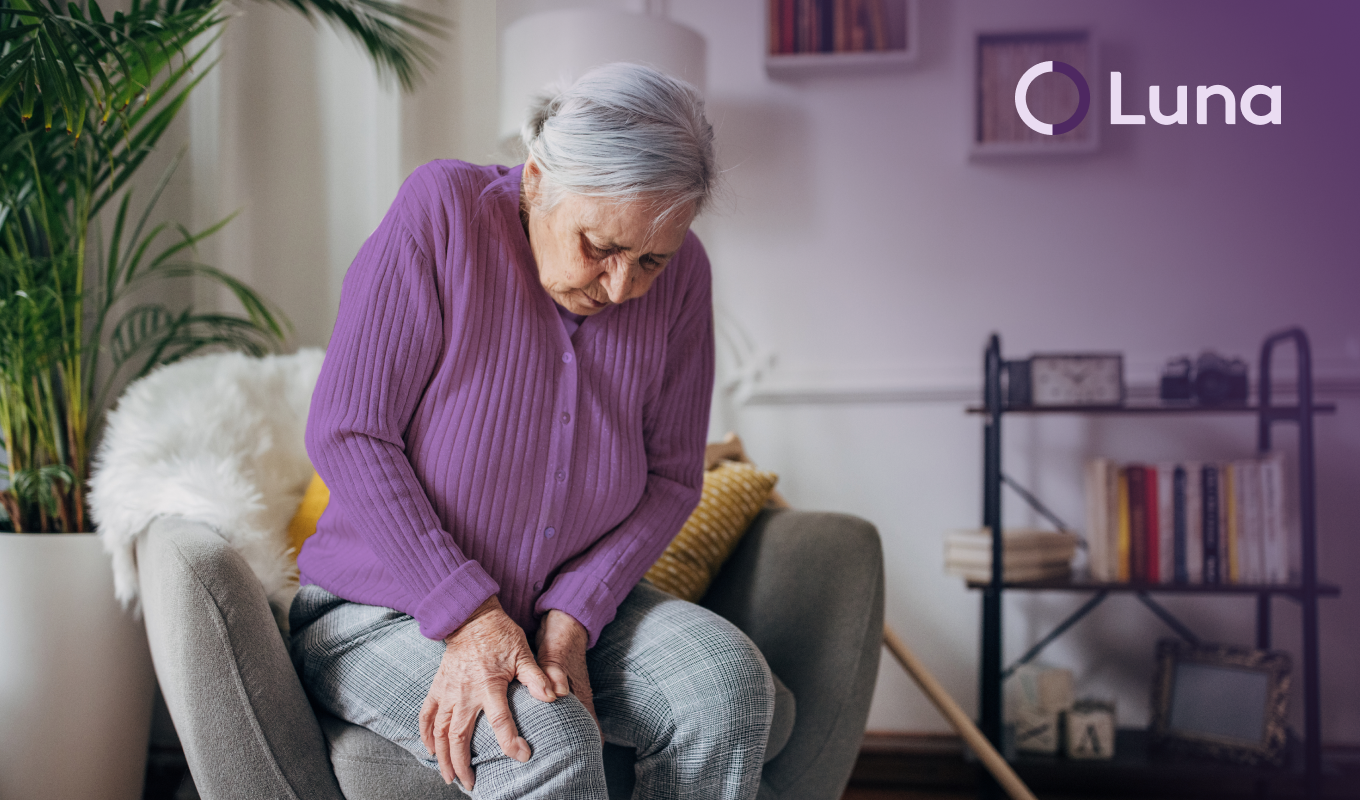
Luna’s physical therapists treat knee pain
Luna employs physical therapists with expertise in treating patients suffering from chronic knee pain. Luna PTs will develop personalized courses of treatment that include tailored routines designed to help the patient get back on their feet and back to the activities they love — as effectively and as soon as possible.
With Luna, patients can receive their physical therapy in the comfort of their own homes. Our physical therapists come to you — it’s physical therapy, delivered.

What is knee pain?
An extremely common affliction, knee pain occurs in patients of all ages. The knee is made up of ligaments, tendons, fluid-filled sacs called bursae, and bones, and damage to any one of these elements can cause pain and reduced function in the knee.
Damage to the knee can be caused by injury, overuse, mechanical problems, or existing conditions such as arthritis. Common problems that can result in knee pain include ACL injuries, fractures, knee bursitis, osteoarthritis, or a dislocated kneecap. Not all knee pain is serious enough to require medical attention; however, all knee pain has the potential to become serious if the root problem remains unaddressed.
Source: WebMD
What causes knee pain?
Knee pain can be caused by injury, mechanical problems, or existing conditions like arthritis. Events like a fall, impact or sudden change in direction can tear the ACL or meniscus, break a bone, or induce bursitis and/or tendonitis. Mechanical problems in the knee can include a dislocated kneecap, or iliotibial band syndrome, which is common among runners.
Advanced age, repetitive stress on the knee, or a previous knee injury can put patients at greater risk of incurring a knee injury. Obesity is also a major risk factor; for every pound that a patient is overweight, the knee must absorb an extra four pounds of pressure with each step. Certain athletic activities such as running can increase risk of knee injury, as well.
The most common causes of knee pain include:
- Athletic activity
- Injury
- Obesity
- Advanced age
- Arthritis
We’ve got your back. Book a PT today.
come to you. Check availability.













